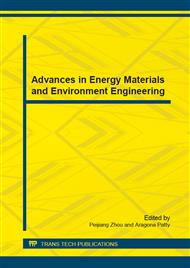[1]
Zhu Qinghua, Dou yiJie. Green Supply Chain Nanagement Game Model based on Government Subsidies [J]. Management Science, 2011, 14 (6) : 86-95. (in Chinese).
Google Scholar
[2]
Dai Yuan-cheng. Haier starts green strategy [N], Southern Daily, 2011-11-24.
Google Scholar
[3]
Min H, Kim I, Green supply chain research: past, present and future[J]. Logistics Research, 2012, 4: 39-47.
DOI: 10.1007/s12159-012-0071-3
Google Scholar
[4]
Wang Neng China, Wang Ying Luo Yang Tong. Research and Trends on Green Supply Chain Management [J]. Management Engineering, 2007, 21 (2): 118 - 122. (in Chinese).
Google Scholar
[5]
Zhang Shuhong. Review and Prospect onGreen Supply Chain Management [J]. Logistics Technology, 211 (2) : 177-181. (in Chinese).
Google Scholar
[6]
Cao Jian, Wu Xiaobo, ZHOU Gengui. Green Supply Chain Coordination Strategy based on product effectiveness heterogeneity [J]. Computer Integrated Manufacturing Systems, 2011, 17 (6) : 1279-1286. (in Chinese).
Google Scholar
[7]
Debabrata G, Janat S. A comparative analysis of greening policies across supply chain structures[J]. Int.J. Production Economics, 2012, 135: 568–583.
DOI: 10.1016/j.ijpe.2011.05.027
Google Scholar
[8]
Prajogo D, Olhager J. Supply chain integration and performance: The effects of long-term relationships, information technology and sharing, and logistics integration[J]. International Journal of Production Economics, 2012, 135(1): 514-522.
DOI: 10.1016/j.ijpe.2011.09.001
Google Scholar
[9]
Turrisi M, Bruccoleri M, Cannella S. Impact of reverse logistics on supply chain performance[J]. International Journal of Physical Distribution & Logistics Management, 2013, 43(7): 5-5.
DOI: 10.1108/ijpdlm-04-2012-0132
Google Scholar
[10]
Peter J.H. L and Carl M W. Pricing Third-Party logistics services: integrating insights from the logistics and industrial services literature[J]. Transportation Journal , SPRING, 2010, 49(2): 24-43.
DOI: 10.5325/transportationj.49.2.0024
Google Scholar
[11]
Ülküa M. A, James H. B. Optimal quoting of delivery time by a third party logistics provider: The impact of shipment consolidation and temporal pricing schemes Production[J]. Manufacturing and Logistics, 2012, 221(1): 110–117.
DOI: 10.1016/j.ejor.2012.03.021
Google Scholar
[12]
Li yuan, zhao daozhi, xiao-guang zhu. Game model of the government and the enterprise behavior based on carbon tax[J]. Journal of resources science, 2013, 35 (1) : 125-131.
Google Scholar


